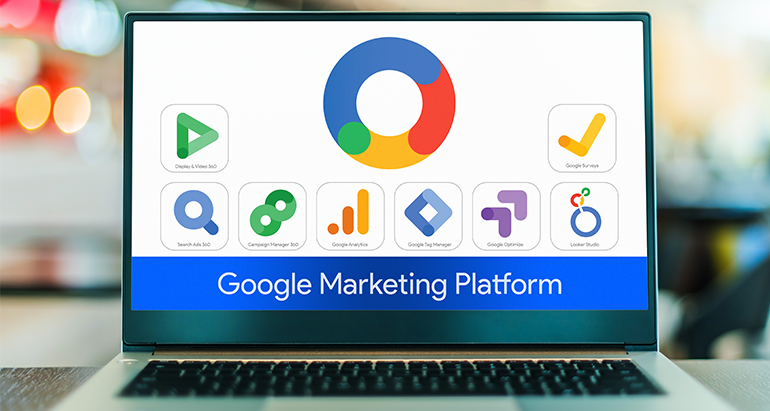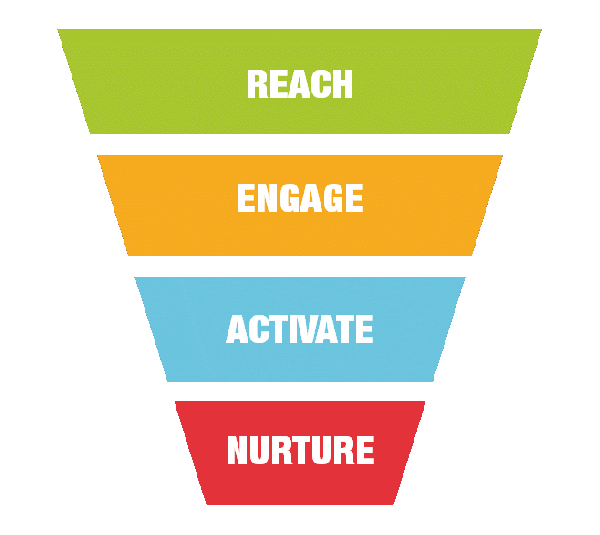
From Universal Analytics to Google Analytics 4: Embracing Change and Maximizing Marketing Performance
By Lindsay Valenty -
Next month, Google's Universal Analytics (UA) will stop processing new data sets effective July 1, 2023, when it officially transitions to Google Analytics 4 (GA4).
We asked our resident analytics expert for new insights into Google Analytics 4 vs. Universal Analytics to determine what's changing and how we've prepared for this switch for our current and future partners.
Most businesses aren't using the latest version, and need to transition their google analytics account over to the new google analytics. But just how much has actually changed?
According to our expert (spoiler alert: it's Sam), there are eight fundamental changes our clients should know about as we move forward with Google Analytics 4.
![]()
Data Model
The primary data model for universal analytics property is sessions, which are collections of user activities over a predetermined period (think engaged sessions, active users, etc). This method worked well for studying website sessions but was insufficient for collecting the full range of user engagement across many touch points and multiple platforms.
The data models in Google Analytics 4 are more adaptable, scalable, and event-focused rather than session-oriented. This change enables a more thorough study of the customer journey, delivering deeper perceptions of user behavior. Each interaction, such as visits, clicks, and conversions, is treated as a separate event to begin collecting data.
Reporting
The Analysis Hub gets introduced in Google Analytics 4. This practical feature offers a simple reporting interface for investigating data, different reports, specific data, and uncovering insights. With the help of the Analysis Hub, you can build unique reports, use sophisticated filters, run cohort analyses, and explore web and app data on the go. Its flexibility and interactivity enable users to easily spot trends and make data-driven decisions on enhanced measurement events.
The transition to more real-time and predictive reporting is another feature of Google Analytics 4. By processing and analyzing data in real time, organizations can gain access to the most recent information and quickly react to shifting patterns and user behavior.
Unlike Universal Analytics, Google Analytics 4's reporting upgrades provide more control, flexibility, interaction, and real-time insights.
Data Collection
The main emphasis in Universal Analytics was on monitoring page views and sessions on your home page, average engagement time, and new users. Tying tracking codes to JavaScript tags for web pages, paired with cookies, made up first party data collection. This approach faced challenges in managing the customer journey because of the rising popularity of mobile apps, cross-platform interactions, not to mention privacy concerns.
By using an event-based data model, Google Analytics 4 overcomes these constraints with new features.
Why is this important? To comply with General Data Protection Regulation (GDPR) and other privacy regulations, like the California Consumer Privacy Act (CCPA), Google Analytics 4 has built-in data removal requests and consent obtention.
Every interaction, including page views, clicks, visiting a specific page, plays of videos, and conversions, is treated as a separate event. With the help of event-based tracking, website performance and marketing campaigns for a desired account are more precisely and thoroughly represented.
Cross-platform Tracking
Cross-platform tracking in Universal Analytics required manual settings, additional tracking codes, or adaptations. Comprehending the entire user journey was challenging due to these limitations in tracking across devices, specifically around how it collects data.
Google Analytics 4 includes improved cross-platform tracking capabilities to collect data. Using a uniform user ID, it tracks user engagement across many platforms and devices, including websites, mobile app data, and offline activities.
Adding "Enhanced Measurement," which automatically tracks frequent occurrences, including page views, engagement rate, new audiences, scrolls, video engagements, and file downloads without additional code implementation, substantially improves Google Analytics 4's cross-platform tracking capabilities.
AI-powered Insights
Advanced algorithms are used by Google Analytics 4's AI-powered insights to automatically find significant patterns, trends, and anomalies in the data. Users can save time and effort by forgoing manual exploration and analysis. Machine learning can discover high-value categories, recognize significant changes in user behavior, and offer insightful recommendations for enhancing marketing tactics.
The "Insights" portion of Google Analytics 4 contains chances for campaign optimization, audience targeting ideas, and even future user behavior projections. You can find untapped possibilities, make data-driven decisions, and improve their marketing operations with greater accuracy and efficacy by utilizing AI-powered insights.
Audience Segmentation
Audience segmentation in Universal Analytics mainly relied on preset dimensions and data like demographics, geography, and device types. Even though these segments offered some targeting and analysis, they frequently lacked the detail needed to capture the complex user behaviors seen across numerous touch points. Google Analytics 4 adopts a more adaptable and dynamic approach to audience segmentation using the event-based data model.
In Google Analytics 4, audience segmentation is based on events, enabling more precise and specialized targeting. You can design segments that closely match your conversion goals and customer lifecycle thanks to the ability to define and track bespoke events that are unique to your organization. Segment modifications can capture particular data points, actions, behaviors, or sequences of events.
"Lifecycle Reporting," which is new in Google Analytics 4, divides users into phases like "Acquisition," "Engagement," and "Monetization." By giving organizations a more comprehensive understanding of user interactions throughout their journey, this tool helps them analyze and improve their marketing initiatives at each stage.

BigQuery Integration
Compared to Universal Analytics, the BigQuery integration for Google Analytics 4 has improved significantly compared to previously processed data.
The Google Analytics platform offers raw data exports unlike Universal Analytics, which only supported sampled data exports to BigQuery. Organizations can use BigQuery to obtain and examine comprehensive hit-level data, enabling more precise and deep research. Using BigQuery's robust querying capabilities, this level of information allows extensive segmentation, customized reporting, and complex data analysis.
The schema evolution functionality, which enables changes in the data over time, is supported by the BigQuery integration in Google Analytics 4. Due to their ability to alter their data model as their analytics requirements change, organizations can get the most pertinent insights out of their Google Analytics 4 data.
User Interface
The straightforward navigation in the Google Analytics 4 user interface is one distinguishing feature. You will find getting the information you require easier thanks to the interface's user-friendly design. Users can move across the platform quickly and effectively thanks to the main navigation bar, which provides rapid access to essential sections, including Analysis, Reports, and Configuration.
Google Analytics 4's user interface offers a more intuitive, streamlined, and analytical experience than Universal Analytics'. The emphasis on data exploration, the inclusion of the Analysis Hub, and the flexibility in reporting empowers users to navigate and analyze their data more effectively, leading to better-informed decision-making and improved marketing performance.
Final thoughts: Google Analytics 4's improvements make it a more robust and comprehensive tool for businesses to optimize their marketing efforts and drive better results with a mix of traditional data collection and machine learning.
Designed to adapt to the changing digital landscape and user privacy regulations, Google Analytics 4 is leaps and bounds better than its predecessor.
Since July 2022, we've transitioned all of our clients with a Google Analytics account from Universal Analytics to Google Analytics 4 (over 100 accounts!). We've also exclusively used Google Analytics 4 for all our google ads campaign tracking since July 2022.
The amount of event tracking you can do is limitless. One of our clients has an advanced tracking set-up with over 120 custom events in Google Analytics 4.
Our digital strategy starts with targeted SEO research and elegant, functional web design—and follows through with data-driven email marketing, digital ads, social media and more. Want to see what Google Analytics 4 can do for you? Let's get digital.